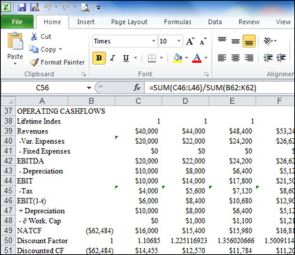
If you manage any project that lasts more than two months, it’s normal business practice to have a monthly project review process to look at how the project is performing to ensure that the project is still on track from a financial perspective.
Other project performance criteria should also be measures like Risk, Resource and Schedule.
It still amazes me that over 90 percent of the companies I visit are still managing some of the largest capital projects in the world by hand crafting these monthly project reviews in Excel spreadsheets.
What problems does this give us?
1. Can the data be trusted?
The source data will often come from a number of different systems, including:
- Actuals costs from Finance
- Cash position from invoices or applications, both in and out
- Project timeline from the program management application
- Contract changes (variations) – often Excel or a specialist solution
- Time spent
- Commitments – both sub contracts and purchasing
- Work breakdown structure – probably only exists in the project planning tool
- Project budget – maybe in the Finance system but often in the wrong structure for doing proper project costs control
- Project progress and revenue recognition
- Manual adjustments and accruals – often done outside the main Finance system
So if this data somehow ends up in an Excel spreadsheet, how do the management know the numbers are the same as the official financial numbers?
How do we know they are true?
2. How long does it take before we can see where we are?
The above data usually takes a long time to collect and translate into a form that the project cost controller can use to forecast the project end position.
Usually it takes a few weeks after a month end before we can have visibility of where we are on the project – this means we might be seven weeks behind, which is far from ideal.
The process is very manual and usually involves a lot of man hours.
Why does it have to be this difficult?
The problem stems from two things:
- Finance and Project Accounting software solutions are not designed to manage the project cost control process
- The source data is held in too many different systems
A modern integrated project-centric business system can eliminate both these issues, and the dependence on a slow untrusted Excel-based solution can be a thing of the past.
I wrote on this topic a year ago, when I said that a traditional ERP solution isn’t necessarily the right answer.
I think my recommendation then still stands today:
There is an alternative which is called a Project Based Solution, which combines the integrated enterprise benefits of ERP, but is designed specifically to support the complex business processes of project-centric organizations.
I would be interested to know what your experience has been.
Yes, I would like to know.
- Download the free IFS whitepaper How Well Does ERP Facilitate Project Based Business Models? for more information.
Do you have questions or comments?
We’d love to hear them so please leave us a message below.
Fraser Mackie
Good article and gets to the point of the spread sheet issues. Software products like Monitor’s mpower and Coreworx Project Information Control can help. You should check these out.